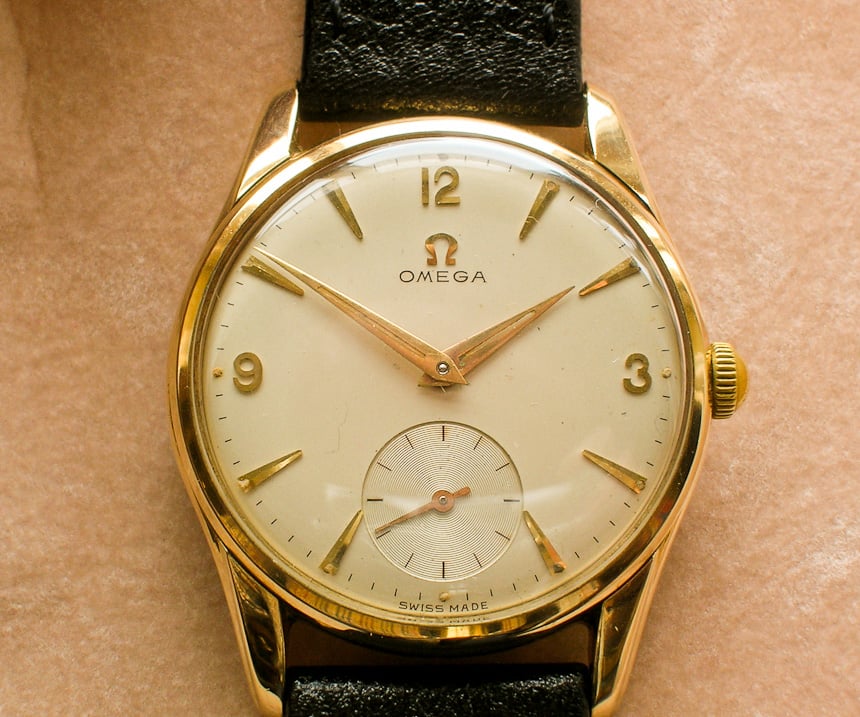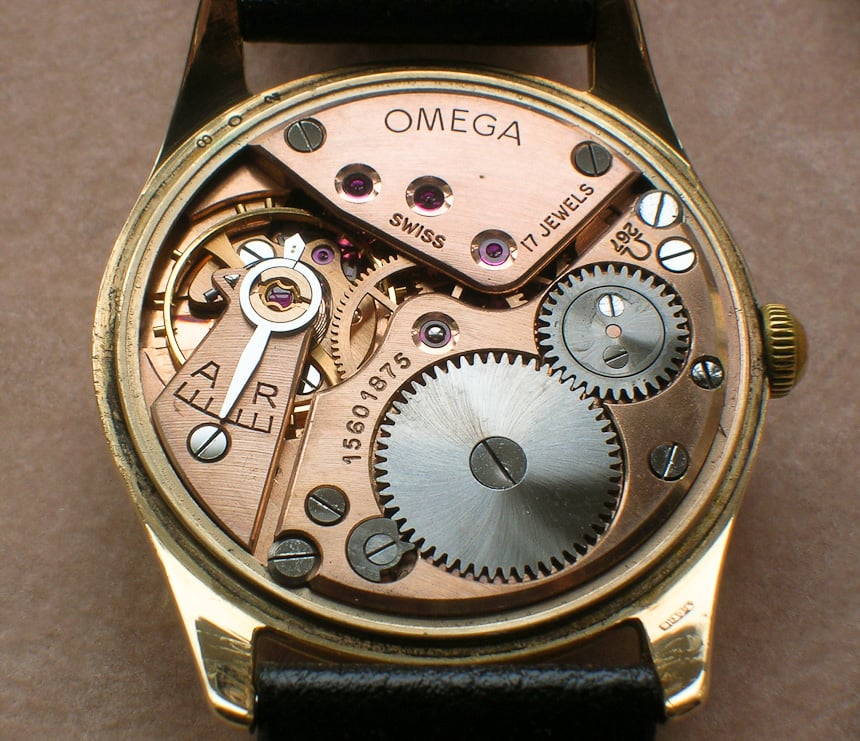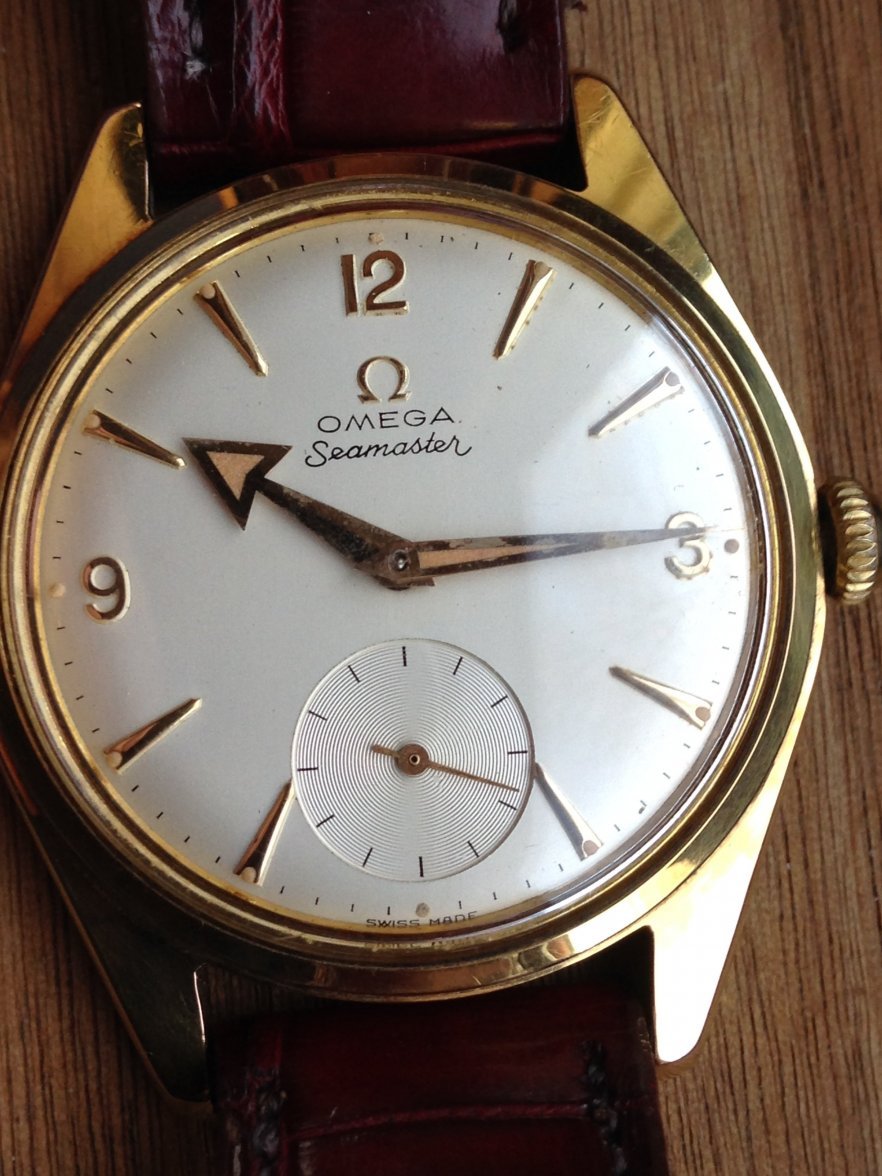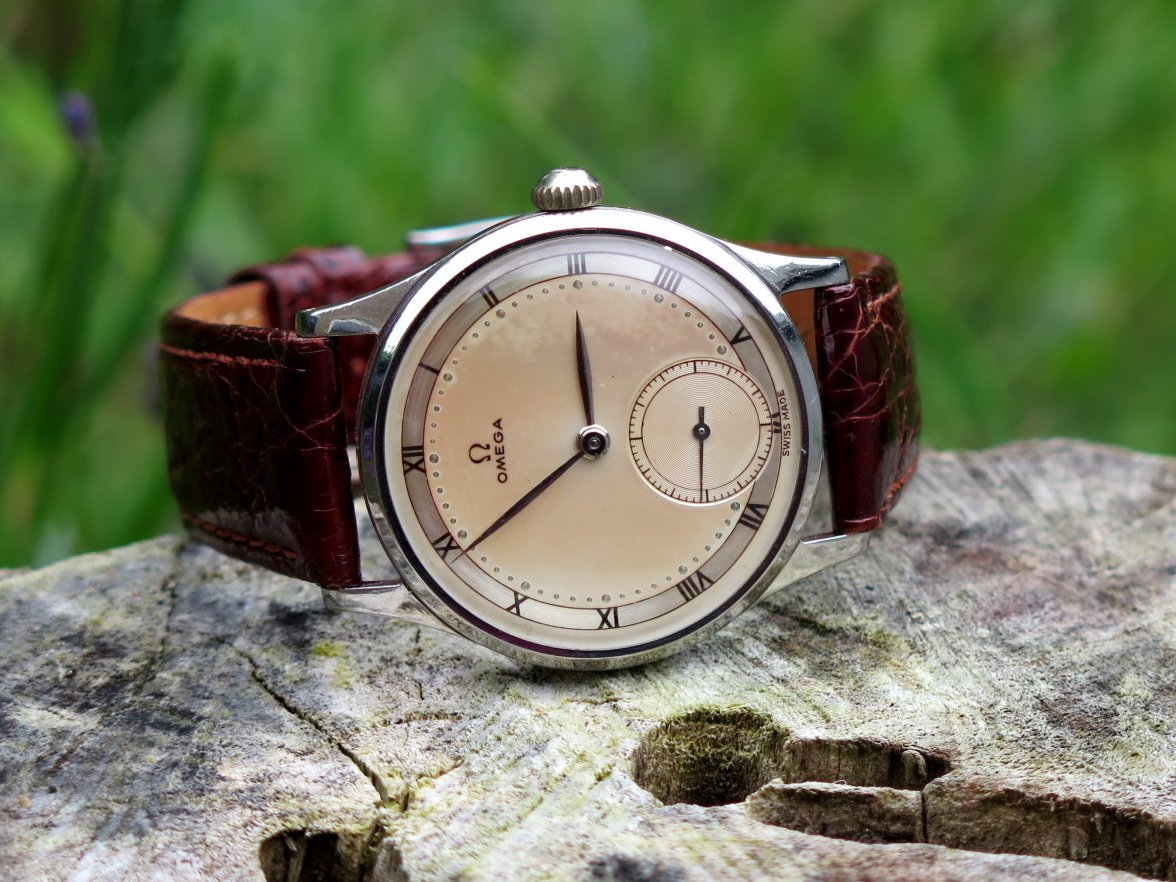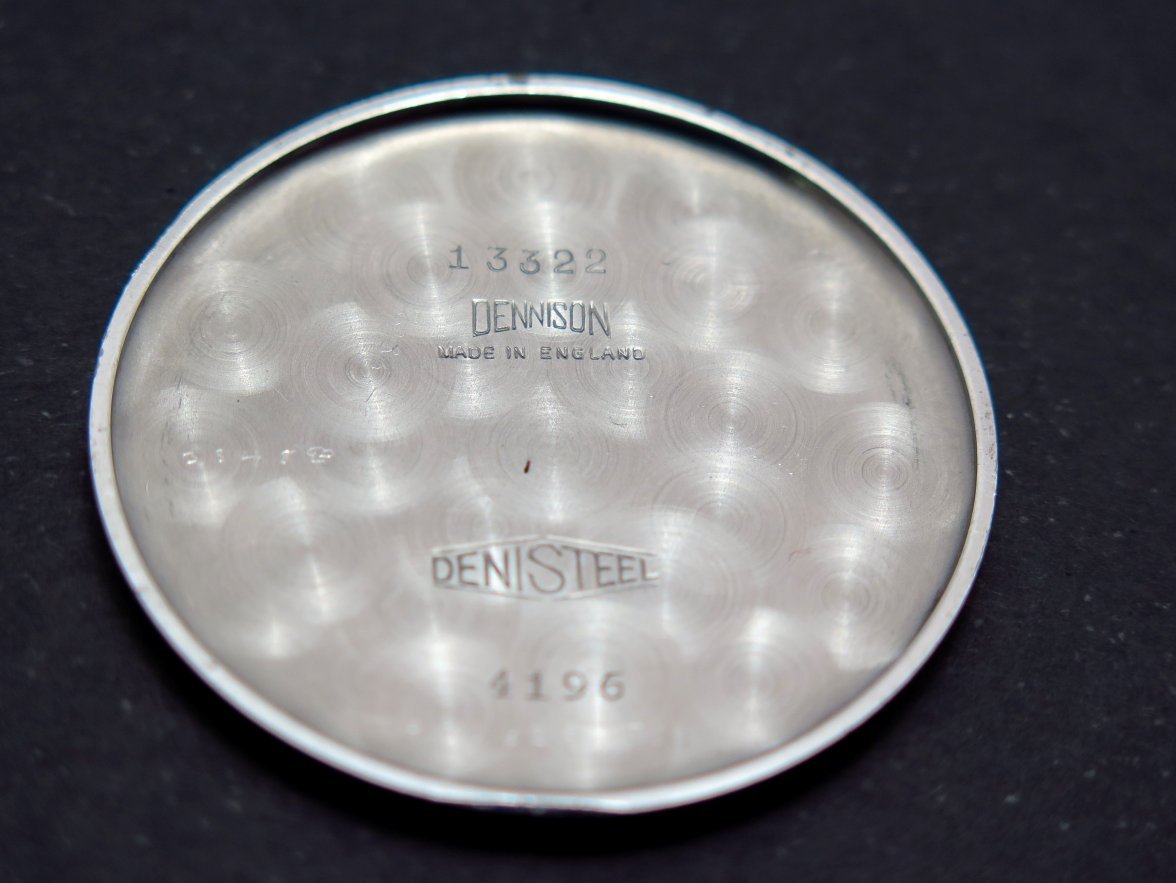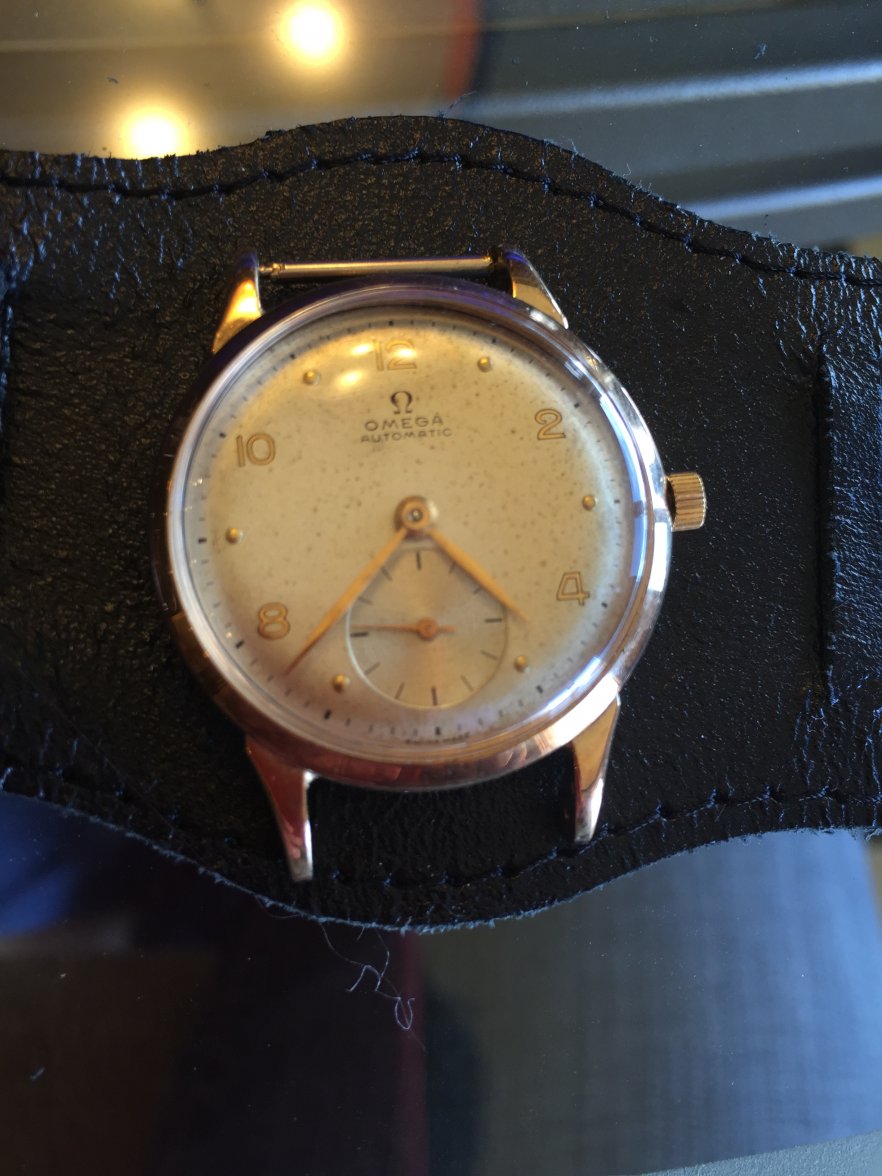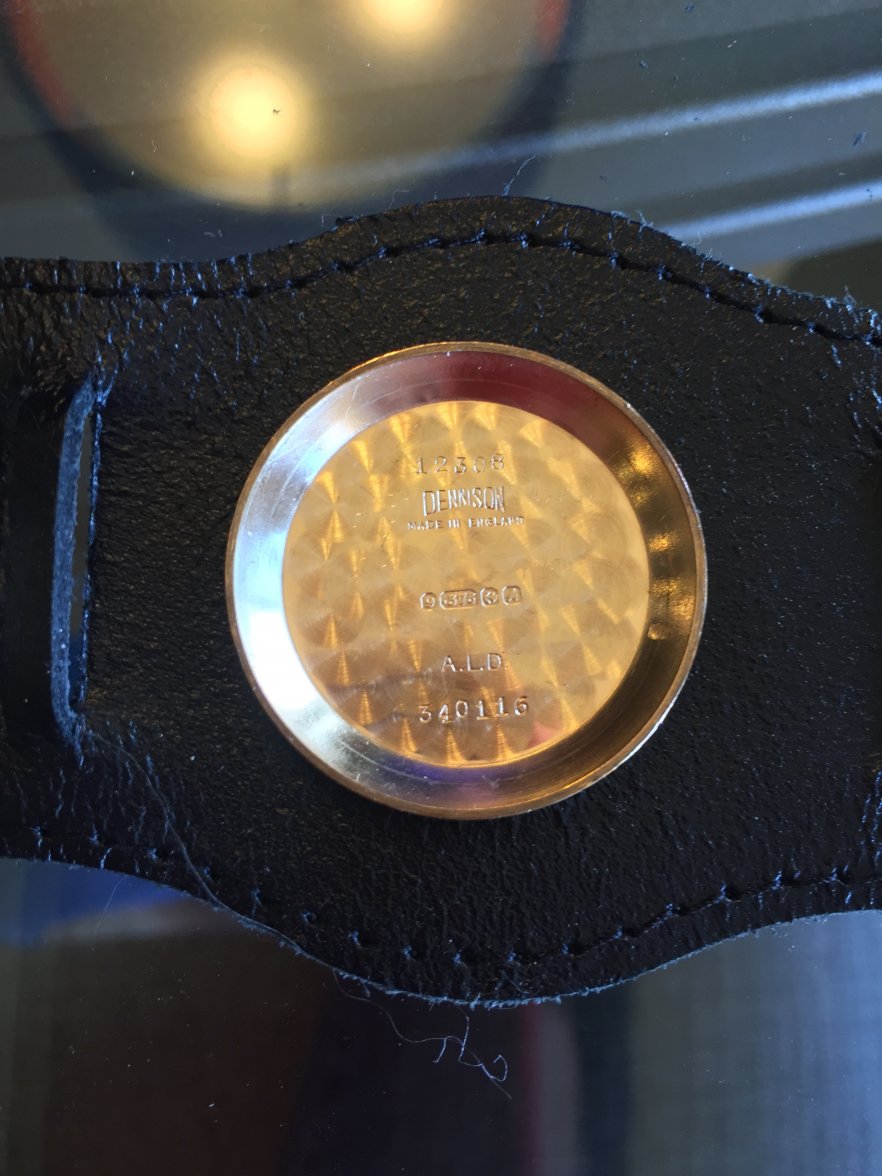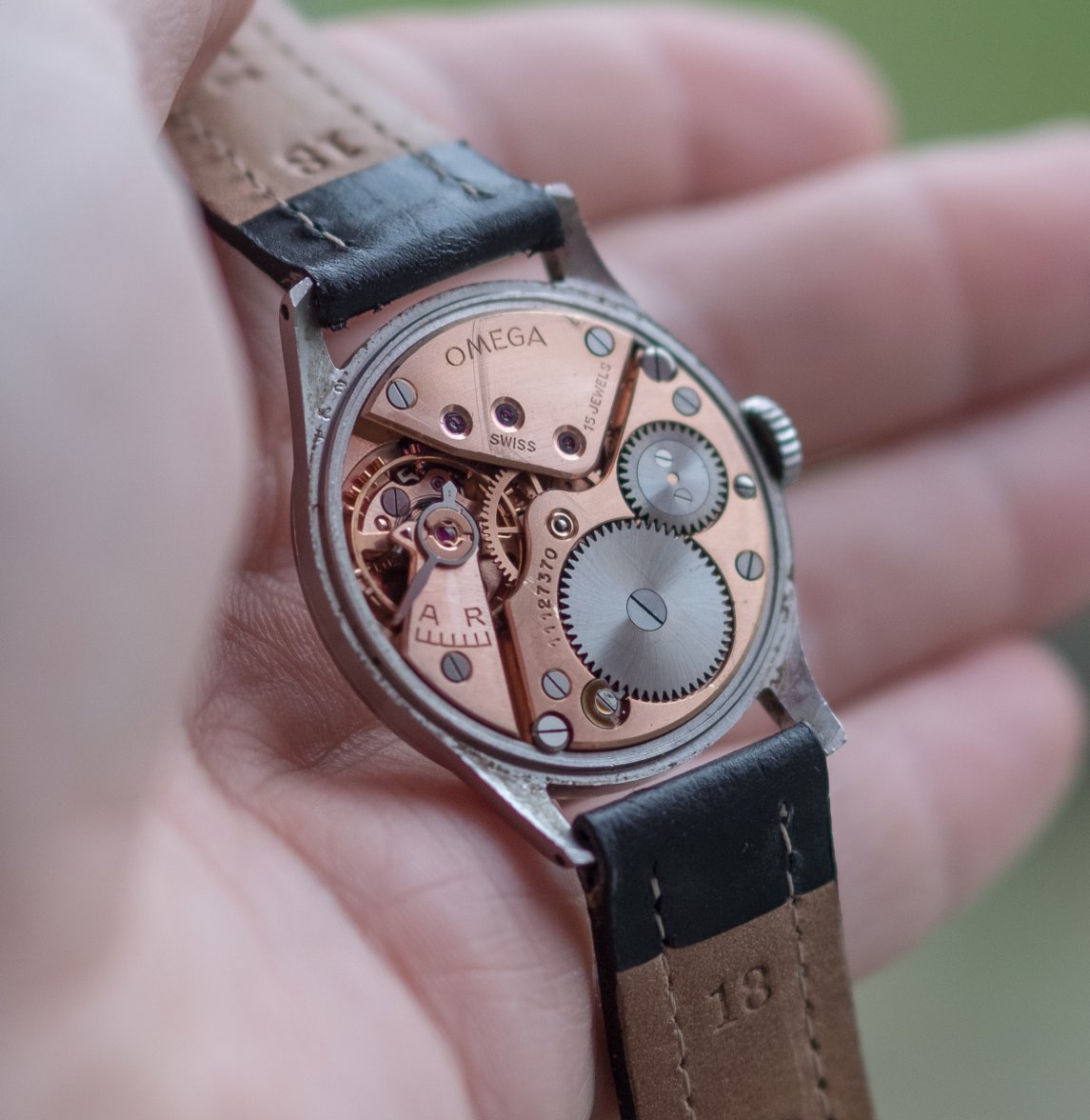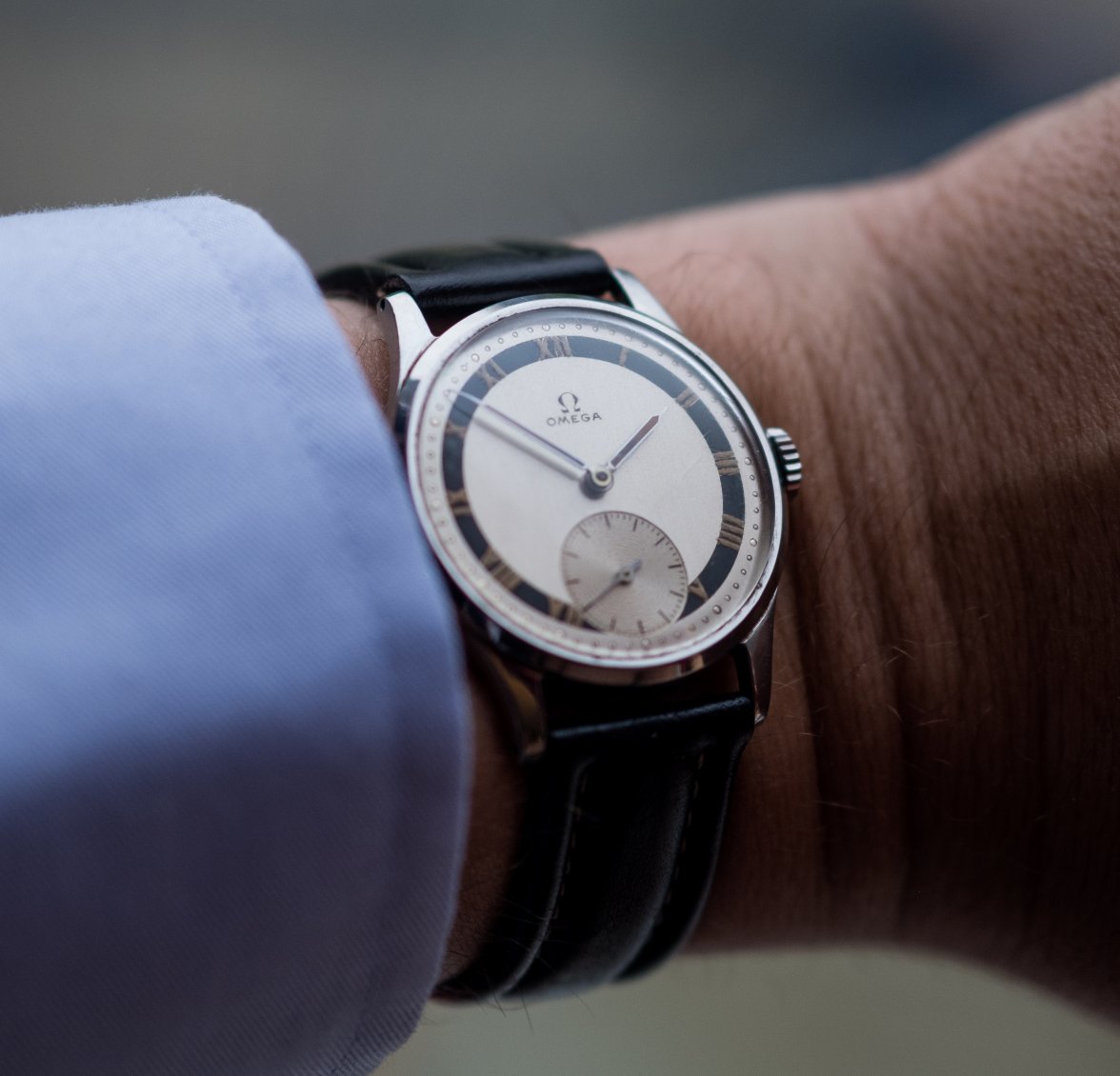John R Smith
·It’s been a dull, wet afternoon here in Cornwall, so I thought I would brush up on my watch photography skills, take some pix and also have a look at the inner workings of my 1959 Omega cal 267. This is a Dennison 9k solid cased watch, so will probably be a bit unfamiliar to those of you from across the pond, just as Wadsworth cases are rather rare here in the UK. The watch itself is quite unassuming, with a nice late-1950s Omega dial and the usual gold furniture -
You may notice that although the dial is in very good condition, there are a couple of bits of fluff trapped between the dial and the crystal which do annoy me. The sub-seconds dial is recessed with a little bit of guilloche finishing, which adds a touch of class I think.
A L Dennison were based in Birmingham, and were one of a handful of English case-makers who imported Omega movements and cased them (mostly) in 9k, but also some in 18k and also stainless steel (“Dennisteel”) cases. They cased movements for several other Swiss makers too, including Rolex and Longines. This is the inside of a typical Dennison case back, with very nice perlage which has an almost 3D appearance as you move it against the light. And before we all get sniffy about 9k gold, I will just remind you that it wears a great deal better than 18k being much harder.
The top number 13339 is the Dennison case reference (for style or type), and is not found in the Omega database, unlike many of the American 14k case references which are in the Omega DB. Then we have the maker’s ID, the Omega triangle (which does not appear on Dennison cases until 1953), the hallmark for the Birmingham assay office, the initials A.L.D. and then something unusual. The 882802 is a serial number which all Dennison cases have and is unique to this watch, unlike the Swiss cases which have a case style reference only.
And so at last to the movement. This is the cal 267, and you can see how similar it is to the 30T2 from which it is descended. This example seems to be in very nice condition, which was purely by luck rather than judgement as this was the first Omega I bought and I didn’t know what I was doing at all. But it runs really well and over a couple of weeks it might drift by a minute or so. The serial number dates the movement to 1957, whereas the watch was sold and engraved in 1959, which gives you an idea of the time-lag involved. On the bottom-right lug you can see the hallmark (which you need a loupe to read), and stamped on the upper-left rim the number 802. These are the last three digits of the case serial number and can be found on most Dennison watches. They serve as an excellent check for authenticity and ensure that you have a matching case and back.
This was the first Omega and the first vintage watch that I bought, and it didn’t cost a great deal. Back then I knew nothing about re-dials or frankens or anything really, so I think I was lucky to find this. I wear it to evening dos on a black strap and it really looks the business 😉
John
You may notice that although the dial is in very good condition, there are a couple of bits of fluff trapped between the dial and the crystal which do annoy me. The sub-seconds dial is recessed with a little bit of guilloche finishing, which adds a touch of class I think.
A L Dennison were based in Birmingham, and were one of a handful of English case-makers who imported Omega movements and cased them (mostly) in 9k, but also some in 18k and also stainless steel (“Dennisteel”) cases. They cased movements for several other Swiss makers too, including Rolex and Longines. This is the inside of a typical Dennison case back, with very nice perlage which has an almost 3D appearance as you move it against the light. And before we all get sniffy about 9k gold, I will just remind you that it wears a great deal better than 18k being much harder.
The top number 13339 is the Dennison case reference (for style or type), and is not found in the Omega database, unlike many of the American 14k case references which are in the Omega DB. Then we have the maker’s ID, the Omega triangle (which does not appear on Dennison cases until 1953), the hallmark for the Birmingham assay office, the initials A.L.D. and then something unusual. The 882802 is a serial number which all Dennison cases have and is unique to this watch, unlike the Swiss cases which have a case style reference only.
And so at last to the movement. This is the cal 267, and you can see how similar it is to the 30T2 from which it is descended. This example seems to be in very nice condition, which was purely by luck rather than judgement as this was the first Omega I bought and I didn’t know what I was doing at all. But it runs really well and over a couple of weeks it might drift by a minute or so. The serial number dates the movement to 1957, whereas the watch was sold and engraved in 1959, which gives you an idea of the time-lag involved. On the bottom-right lug you can see the hallmark (which you need a loupe to read), and stamped on the upper-left rim the number 802. These are the last three digits of the case serial number and can be found on most Dennison watches. They serve as an excellent check for authenticity and ensure that you have a matching case and back.
This was the first Omega and the first vintage watch that I bought, and it didn’t cost a great deal. Back then I knew nothing about re-dials or frankens or anything really, so I think I was lucky to find this. I wear it to evening dos on a black strap and it really looks the business 😉
John
